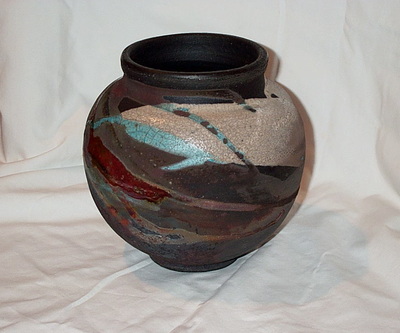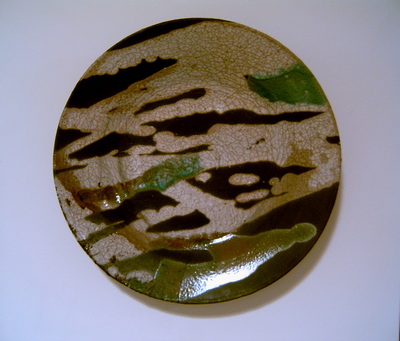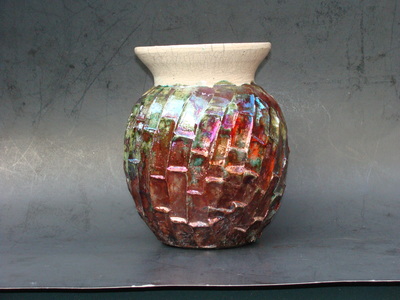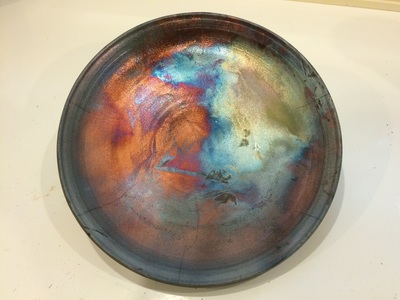Examples of my raku pottery
Raku firing, as a process, is fun for potters because of its interactive nature and immediate results. It was originally developed in Japan and used as a quick decorating method for pieces used in tea ceremonies. The process involved putting bisques (once-fired) pots into an already hot kiln (~1500F) and then removing the pot shortly thereafter. The cooling cycle was an essential part of the decorative process. The Japanese would traditionally allow the pot to cool in the air (oxidize) and then dunk the pot in water. The result was large crackles in the glaze as the sudden cooling shrunk the glaze at a faster rate than the clay body. This process is still used but many potters in the West now use a reduction process to decorate. Reduction means that the red-hot pot is quickly taken from the kiln and placed in combustible material [I use sawdust and/or shredded paper]. The pot ignites flames but then the container is covered tight. The fire, starved of oxygen in the atmosphere, finds oxygen in the glaze and clay body. This chemical reaction creates the potential for vibrant colors and metallic lustrous. Of course, it also allows for complete failures and broken pots. Because of the inexact nature of raku firing, getting repeatable results should not be counted on; and that's the attraction. Allowing accidents to happen is the best definition of raku firing. The finished product is decorative only; the glaze is porous because of the crackles and frequently unglazed portions of the pot. The uniqueness and visceral appeal of raku pots, however, atone for their challenges.









